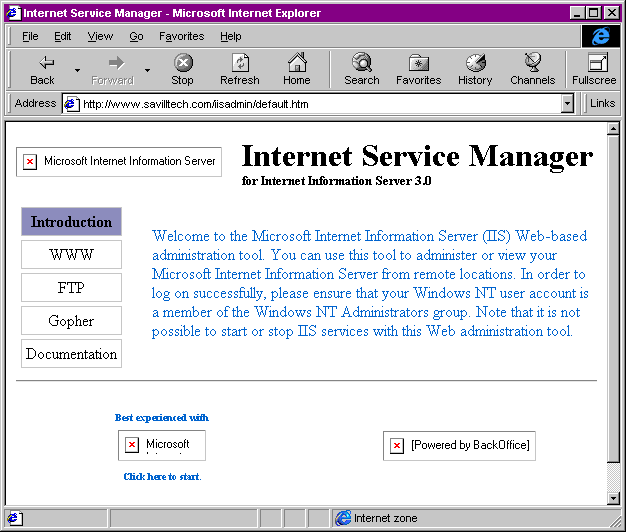Microsoft Office For Mac Text Import Wizard
Where are Import and Export in Project 2010 and 2013 Method 1: Easily find out Import Export in Project 2010 and 2013 with Classic Menu. After clicking the Tools menu under Menus tab, you will view the Import Outlook Tasks item in the drop down list. Apr 17, 2018 If you use Microsoft Office 2016 with a Mac computer, you can easily import addresses or other data from an Excel spreadsheet or from your Apple Contacts. Nov 19, 2019 In Excel 2011 for Mac, on the File menu, click Open, and then select the.txt file that you created in step 1. In the Text Import Wizard, follow these steps. Be aware that in these next three steps, the default settings are used. Select Delimited as the file type, and then click Next. Office for Mac with Office 365, gives you power and flexibility to get things done virtually from anywhere. Find the right Office for you. Learn how Microsoft uses ads to create a more customized online experience tailored for you.
- Microsoft Office
- Microsoft Office For Mac Text Import Wizard For Large Files
- Microsoft Office For Mac Text Import Wizard Download
The Export Wizard and Import Wizard help you transfer project data between Microsoft Project and other programs. The following is a list of formats you export to or import from.
Apr 25, 2017 Text import wizard on Excel for Mac doesn't allow you to scroll data window to see all columns In Excel for Mac 2016, I've discovered that when trying to import a CSV text file, you can only view the leftmost set of columns that will fit in the data preview window (e.g., to set their data type, etc.). You can import information into Project by using any entered field from another product's file format, such as Microsoft Office Excel, Microsoft Office Access, Extensible Markup Language (XML), comma-separated values (CSV), or tab delimited text format. Where are Import and Export in Microsoft Office 2007, 2010, 2013, 2016, 2019 and 365. After clicking this Import button, it displays the Import and Export Wizard dialog box. 4: Import and Export in Outlook 2010's Ribbon Where are Import and Export in InfoPath 2010 and 2013 Method 1: Familiar way to seek for Import Export in InfoPath.
Microsoft Excel (as a workbook or PivotTable report)
text-only (tab delimited)
comma-separated values (CSV)
Extensible Markup Language (XML)
By defining or editing the export or import maps of these wizards, you can easily transfer data to and from the task, resource, or assignment fields that you want.
What do you want to do?
Export project information
Choose File > Save As.
Choose Browse. (Not applicable in Project 2010.)
In the Save As type box, select the file format that you want to export data to.
In the File name box, type a name for the exported file.
Choose Save.
Follow the instructions in the Export Wizard to export the data that you want into the proper fields of the destination file.
When the wizard prompts you to create a new map or use an existing one, do one of the following:
Choose New map to create a new export map from scratch.
Choose Use existing map to use a default map or a map that you previously defined and saved.
On the Task Mapping, Resource Mapping, or Assignment Mapping page of the Export Wizard, verify or edit the mapping assumptions of Project, or create a new map:
To export specific project information, type or select the field that you want in the From column, and then press ENTER.
To add all task, resource, or assignment fields in your project to the export map, choose Add All.
To add all task or resource fields of a specific table to the export map, choose Base on Table. Select the table you want to use, and then select OK.
To remove all task, resource, or assignment fields from an export map, choose Clear All.
To insert a new field above another field, select a field in the From column, and then choose Insert Row.
To insert a new field above another field, select a field in the From column, and then choose Insert Row.
To delete a field, select it in the From column, and then choose Delete Row. To change the name of the field in the destination file, select the field in the To column, and then type a new name.
To export certain tasks or resources only, select the filter that you want in the Export filter box. Microsoft word 2016 mac prevent table of contents from updating.
If you want to change the order of the fields in the destination file, select a field in the To column, and then use the Move buttons to move the field to the position that you want.
On the last page of the Export Wizard, choose Finish to export your data.
Notes:
You can export only an entire project to XML format. Project maps the data automatically, without the Export Wizard. Also, to minimize the file size, fields that contain null values are not included in the exported XML file.
On the Task Mapping, Resource Mapping, or Assignment Mapping page of the Export Wizard, under Preview, you can review the layout of the export map.
You can save a new or edited export map if you want to use it again. On the last page of the Export Wizard, choose Save Map, and then type a name in the Map name box. The new map will be added to the list of predefined maps.
You can use an existing export map from another project if the map is available in the global file. By using the Organizer, you can copy an export map from a project file to the global file.
We can use different font format, the fonts of Reporting Services is based on the operating system font family.For more fonts are supported in Reporting Services, please refer to the following steps to view the Font Family list in the Business Intelligence Development Studio authoring environments:1. Add a textbox to the design surface, and then right-click on the textbox and select Properties.2. Click the “Font” tab to view the Font Family list.If you have any more questions, please feel free to ask.Thanks,Bin Long.
 Hi Jayakumar,From your description, I tried to reproduce this issue in Reporting Services 2005 and 2008. Personally, you can try to reinstall the “Calibri” font on client machine.Hope this helps.Thanks,Bin Long. I exported my report to PDF, MHTML, Excel, Word and TIFF format, and the “Calibri” font worked fine for me.Since this issue that the “Calibri” font cannot be shown on client machine is unusual. Hi Jayakumar,Reporting Services can support many fonts, such as Arial, Calibri, Cambria, Gigi and so on.
Hi Jayakumar,From your description, I tried to reproduce this issue in Reporting Services 2005 and 2008. Personally, you can try to reinstall the “Calibri” font on client machine.Hope this helps.Thanks,Bin Long. I exported my report to PDF, MHTML, Excel, Word and TIFF format, and the “Calibri” font worked fine for me.Since this issue that the “Calibri” font cannot be shown on client machine is unusual. Hi Jayakumar,Reporting Services can support many fonts, such as Arial, Calibri, Cambria, Gigi and so on.When you create an export map to save data to either CSV file format or TXT file format and you set the text delimiter, the delimiter, not the file extension, controls the file type. For example, if you save to a file named Myproject.csv but you specified a tab delimiter in the map, the CSV file will have tabs instead of commas, even though the file extension indicates commas.

Microsoft Office
Import project information
You can import information into Project by using any entered field from another product's file format, such as Microsoft Office Excel, Microsoft Office Access, Extensible Markup Language (XML), comma-separated values (CSV), or tab delimited text format.
Choose File > Open > Browse.
(In Project 2010, choose File > Open.)
In the Files of type box, select the file type that you want to import data from.
Navigate to the folder that contains the file you want to import, and then select the file in the file list.
Choose Open.
Follow the instructions in the Import Wizard to import the data that you want into the proper Project fields.
On the Task Mapping, Resource Mapping, or Assignment Mapping page of the Import Wizard, verify or edit the mapping assumptions of Project:
To import the data from a field in the source file to a different Project field, select the field in the To column, select a new field, and then press ENTER.
To change the name of a field in the destination file, select the field in the To column, and then type a new name.
To delete a field, select it in the From column, and then choose Delete Row.
To insert a new field above another field, select a field in the From column, and then choose Insert Row.
To remove all task, resource, or assignment fields from an import map, choose Clear All.
To add all task, resource, or assignment fields of the destination file to the import map, choose Add All.
Tip: On the Task Mapping, Resource Mapping, or Assignment Mapping page of the Import Wizard, under Preview, you can preview the layout of the import map.
To change the order of the fields in the destination file, select a field in the To column, and then use the Move buttons to move the field to the position that you want.
On the last page of the Import Wizard, choose Finish to import your data.
Tip: You can save a new or edited import map if you want to use it again. On the last page of the Import Wizard, choose Save Map, and then type a name in the Map name box. The new map will be added to the list of predefined maps.
Microsoft Office For Mac Text Import Wizard For Large Files
Notes:
Microsoft Office For Mac Text Import Wizard Download
You can use an existing import map from another project if the map is available in the global file. By using the Organizer, you can copy an import map from a project file to the global file.
When you create an import map to incorporate data from either CSV file format or TXT file format and you set the text delimiter, the delimiter, not the file extension, controls the file type. For example, if you import a file named Myproject.csv but you specified a tab delimiter in the map, the CSV file will have tabs instead of commas, even though the file extension indicates commas.
Although you can enter values in some calculated fields, Project may recalculate these values, either automatically or when you specify.
Project can import only XML data that can be validated against its data interchange schema.
If you are using Microsoft Project Professional, and you want to import information from another file format into an enterprise project that requires you to enter specific information for tasks, you won't be able to save the project until you enter all required information.
If you are using Microsoft Project Professional, remember that resource cost fields cannot be updated in an enterprise project. You can import resource cost information only in nonenterprise projects or for nonenterprise resources in a project.